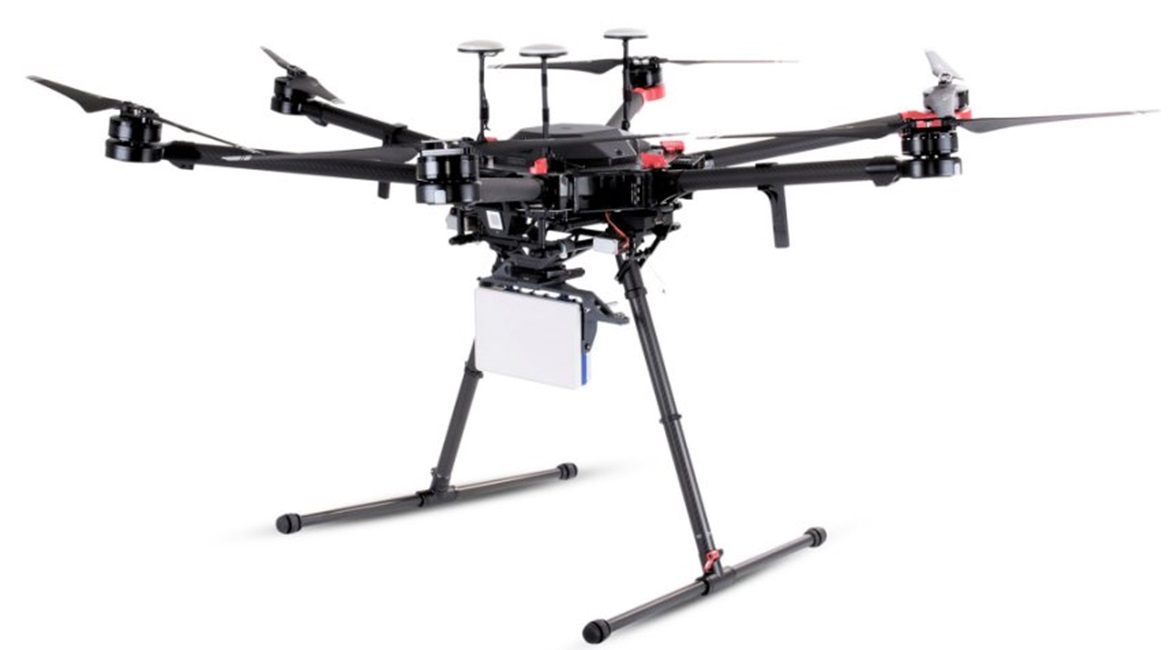
Echodyne has developed a family of palm-sized metamaterial electronically-scanning array (MESA) radars for missions such as counter-unmanned aerial system (C-UAS), special event security, and UAS autonomy at a unit price of under USD50,000.
Eben Frankenberg, Echodyne president and chief executive officer (CEO), told Janes on 9 June that the company’s innovation is creating phased array radars without phase shifters. While traditional phased-array, electronically-scanning array (ESA) radars phase shift or time delay to steer the beam, Echodyne’s MESA radars turn cells on and off to steer the beam. Echodyne believes that this simpler architecture brings an improvement in cost, size, weight, and power.

An Echodyne Echoflight air-to-air collision avoidance radar mounted on a DJI Matrice 600 UAV. (Echodyne)
Echodyne has four radars. The EchoGuard and EchoGuard International ground-to-air airspace management radars detect and track air and ground threats in three dimensions. These two radars have the same 1.25 kg weight and 50 W power but slightly different frequency bands. The EchoGuard CR, for security missions including critical infrastructure, is the same weight but has significantly less power because it is for closer range.
The EchoGuard can track a pocket UAS at 200 m, a DJI Mavic Pro or DJI Phantom 4 UAS at 900 m, a DJI Matrice 600 at 1.4 km, and small fixed-wing aircraft such as Cessnas at 2.5 km. The EchoGuard can also track humans on the ground at 2.2 km and ground vehicles and sea vessels at 3.5 km.
The EchoFlight air-to-air collision avoidance radar is mounted on the front of a UAS for detect-and-avoid. This radar is smaller and lighter at 0.8 kg with less power at 40 W than the EchoGuard. There is also an EchoDrive high-end ground-to-ground/ground-to-air radar for unmanned ground vehicles (UGV).
Looking to read the full article?
Gain unlimited access to Janes news and more...




